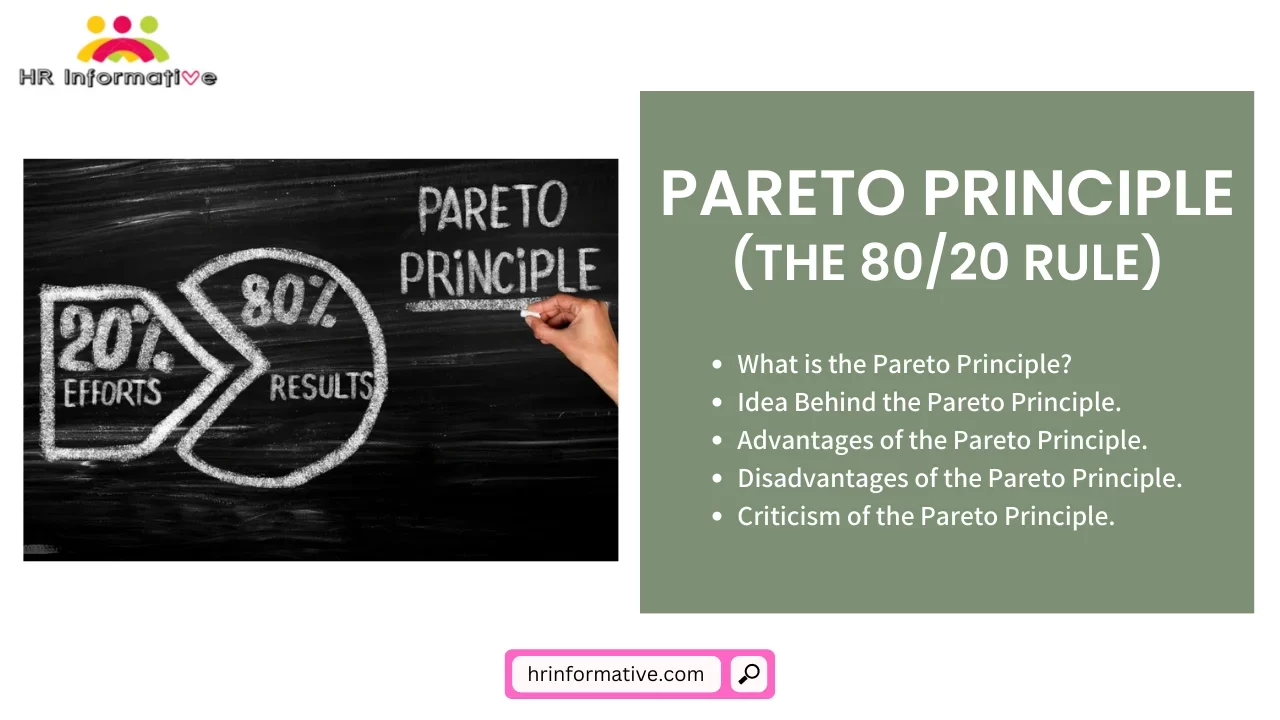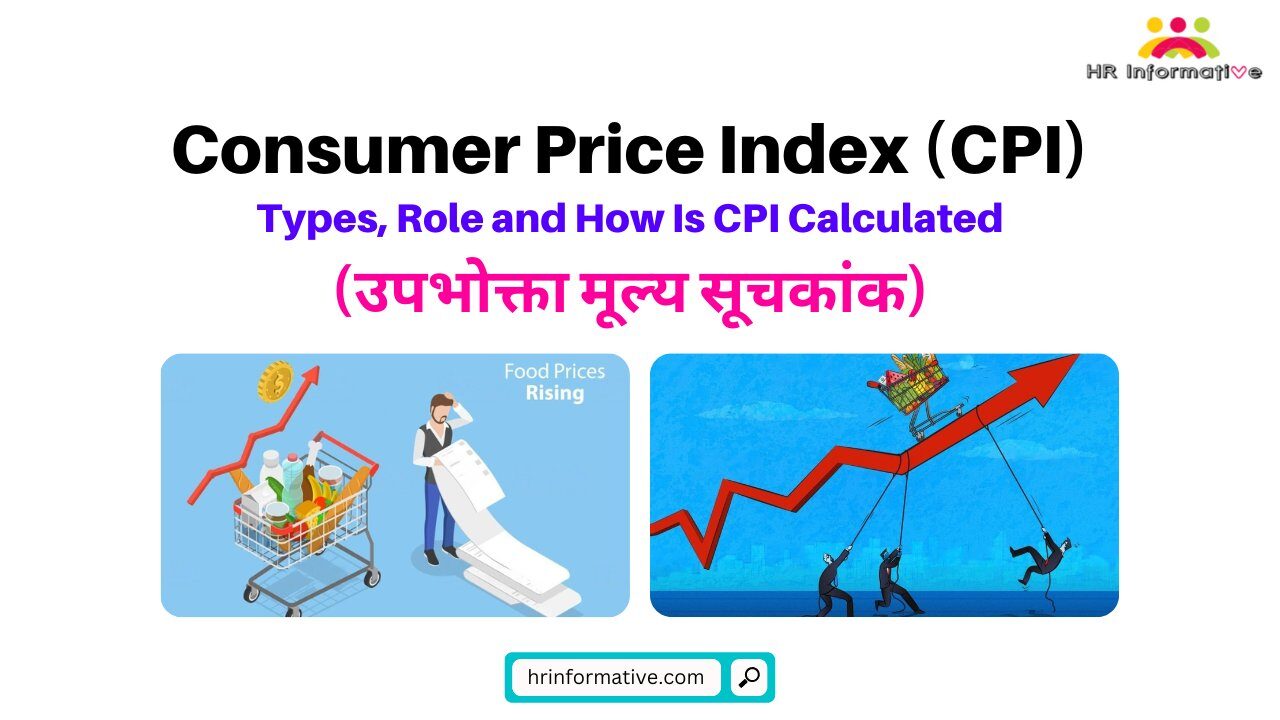Hello Friends, today we are going to talk about a very popular and important principle named Pareto Principle. This principle can help you to determine and prioritize your highest-impact tasks, increasing your productivity throughout the day. In this article, we will elaborate on the Pareto Principle and try to give you complete detail in all aspects. So please read the article till the end.
What is the Pareto Principle?
‘The Pareto Principle’, also known as ‘The 80/20 Rule’, was developed by Italian economist Vilfredo Pareto in 1896. The Pareto Principle is the idea that 20% of the effort or input leads to 80% of the result or input. The purpose of this principle is to recognize that most things in life are not equally distributed.
The Pareto Principle is the key to identifying the 20% of one’s actions on the most productive tasks that lead to the most success. This principle enables us to spot the important things and ignore the unimportant things.
The Pareto Principle is a concept that has proven powerful when applied to many areas of life, including business, relationships, education, and marketing.
For example, the Pareto principle states that, in any retail organization, 80% of sales will come from 20% of the customers.
Idea Behind the Pareto Principle
Vilfredo Pareto is the father of this principle. He was born in Italy in 1848 and went on to become an important philosopher and economist. He observed that 80% of the wealth in Italy was owned by 20% of the people.
When testing this principle, he found that 80% of the wealth and land in almost all countries was controlled by 20% of the people.
He also found this concept to be true when he observed his garden and found that 20% of the pea pods yielded 80% of the peas.
He also investigated different industries and found that 80% of production typically came from just 20% of the companies.
In the early 1950s, psychologist Joseph Juran expanded on the idea, arguing that it could be applied to management and even as a “universal principle”.
He believed that 80% of a company’s revenue would come from 20% of its customers and that 80% of production problems would be caused by only 20% of all possible sources of error.
In 2005, Juran also coined the terms “vital few” and “useful many” or “trivial many” to refer to those few contributions that result in the bulk of the effect, and the many that have only a small impact.
The term Pareto Principle was not coined by Pareto, but by Dr. Joseph Juran in the 1940s. Juran found that by applying Pareto’s observations to his own area of operations management, he could help businesses to improve their production, noting that 80% of production problems are caused by 20% of production methods.
Through this observation, Juran could focus on reducing the 20% of problems to increase production quality. This strategy he named the Pareto Principle while also noting that one should focus on the ‘vital few’ and ignore the ‘trivial many’ to have the greatest success.
Over time, many other organizations and individuals have further developed and refined this principle, leading to its widespread use today in fields ranging from business to agriculture to healthcare.
Some general examples of the Pareto Principle:
- 80% of profits come from 20% of the products or services a company sells.
- Wearing 20% of clothes 80% of the time.
- 20% of a plant contains 80% fruit.
- 20% of players result in 80% of points scored.
- Fixing the top 20% of the most reported bugs in a software program also eliminates 80% of related errors and crashes.
Advantages of the Pareto Principle
The reason behind the success of the Pareto principle is that it provides a natural gateway for determining who to reward and what price to fix.
For instance, if 80% of car crashes happen due to 20% of your faults, then you can find these faults and fix them immediately.
Thus, you can understand how to allocate your resources. Given below are some other advantages of the Pareto Principle.
Increase Productivity
The Pareto Principle is extremely useful for determining which areas to focus your efforts and resources in order to achieve maximum efficiency.
By using the Pareto Principle or the 80/20 rule, employees can prioritize their tasks so that they can focus on the critical 20% that will produce 80% of the results.
Of course, the data and figures might vary slightly. However, the Pareto Principle teaches not to focus on the trivial aspects of work as they do not contribute to long-term goals.
Increase Profitability
It is noticed that, in any business that roughly 20% of your salesmen produce 80% of your sales. Depending on your end goals, the Pareto Principle can be utilized to determine whether you need to focus your effort and resources on the 20% of staff that produce most of your sales to further improve their skills or to focus on the 80% of other employees that are struggling to bring in any sales.
Identify Problems
The principle may be used to understand the causes behind unproductiveness within the workplace. You can employ the 80/20 rule to discover the 20% causes, which lead to 80% unproductivity. Unproductivity in the workplace can be a result of many factors such as distraction caused by social media, unsuitable work environments, or unskilled workers.
Increase the Quality of the Study
You can apply the Pareto Principle in studying as well. If you are working on research, instead of spending 1 hour drafting your research paper, you can spend 10 minutes thinking of ideas and spend 50 minutes elaborating on the best one.
Improve Customer Service
Customer service is a very integral part of any business. It is crucial to ensure that the customers are happy with the customer support that they get. The Pareto Principle is a wonderful way of indicating that 80% of your complaints as a customer are linked to 20% of products and services.
Thus you can figure out which products are creating the maximum problem and resolve these issues. By making use of the 80/20 rule, you can try to identify the particular customer support staff, which is linked to the majority of customer complaints. You can thus alter how customers interact with the associated team.
Disadvantages of the Pareto Principle
The primary function of Pareto analysis is to discover the causes of events and to find out the frequency of occurrence of these events. However, there are some disadvantages to using this principle in the workplace.
Only Analyses the Past
The Pareto analysis relies exclusively on past information, which can be misleading. The Pareto analysis only reflects the company’s past performance and is no longer relevant.
Problem Solving Inaccurate
The Pareto analysis only gives a quantitative relationship between cost outputs and inputs. Small businesses will find that some cost centers are proving too expensive for the company. They then proceed to deduct the costs of this cost case. However, these cost centers can be very important to the functioning of the business. In such a situation, cutting the cost of this process can prove to be harmful to the brand.
Not Always Be Applicable
In Pareto’s observation, the 80/20 split was valid and applicable. However, this may not always be true as 20% of the workforce (20 out of 100 employees) can accomplish 80% of the production. Variations of the Pareto Principle can occur such as 30% of the workforce being responsible for 60% of production, so the 80-20 rule does not always apply.
Misunderstood
Businesses often use Pareto analysis for a variety of purposes. Many times its use is not understood properly and it is misused. For example, if the clients who give maximum profit to the business are about 20% of the total clients, then a company concentrates its attention on this group of clients and ignores the rest.
However, this is a very impractical technique at times. If you don’t give enough time to all your clients, you may lose most of them. These clients could be potential profits in the future.
Scoring May Be Inaccurate
Pareto analysis works well if you have been particularly careful with the scoring. Businesses that fail to give proper scoring to each factor only end up with the wrong results.
The Pareto principle does not consider the time factor. It disregards the time takes to find and recruit clients and only looks at their monetary value.
Criticism of the Pareto Principle
Despite the praise for The 80-20 Rule or The Pareto Principle, it also has its criticisms.
- The Pareto Principle is not a mathematical law, rather it is an observation. This means that it is not true for every case and shouldn’t be taken as absolute.
- A common misconception of the Pareto Principle is that with 20% effort, you can gain 80% results, which is not necessarily the case.
- The percentages do not refer to the effort applied, but the causes and consequences you are working on. To achieve 80% results, you still need to put 100% effort into that 20% focus.
- The Pareto Principle can be easy to misinterpret. Some may think that they should focus all their attention on the 20% that is a high priority and forget about the rest of their tasks. However, you shouldn’t neglect the 80% of smaller tasks, as this can build up and become a bigger problem over time.
- The challenge is to find the right balance when it comes to the Pareto Principle. Perhaps you can do the least important tasks at times when you feel less productive to do priority tasks.
- Lastly, the Pareto Principle can only apply to the past. Meaning, it reflects data from the past and can be useful for planning what you could do, but it will not make predictions for the future.
Conclusion
The Pareto Principle is an observation, not a law of nature. The Pareto Principle is not a way to get rid of every non-essential aspect of a circumstance.
It is a phenomenon that enables you to concentrate on things that will have a bigger influence on your company. To achieve the most profitability, you can identify the areas that cause the most problems and fix them.
Pareto Principle Frequently Asked Questions (FAQs)
Q: What is the Pareto Principle also known as?
Ans: Pareto Principle is alos known as The 80/20 Rule.
Q: What is the Pareto Principle?
Ans: The Pareto Principle states that 80% of the results come from 20% of the causes.
Q: Who is the father of the Pareto Principle?
Ans: Vilfredo Pareto is the father of the Pareto Principle.
Q: When was the Pareto Principle or the 80/20 Rule developed?
Ans: It was developed by Italian economist Vilfredo Pareto in 1896.
Related Posts :



